
Economic therefore Political stability
https://t.co/l8SWrVxCZf
2 subscribers
How to get URL link on X (Twitter) App

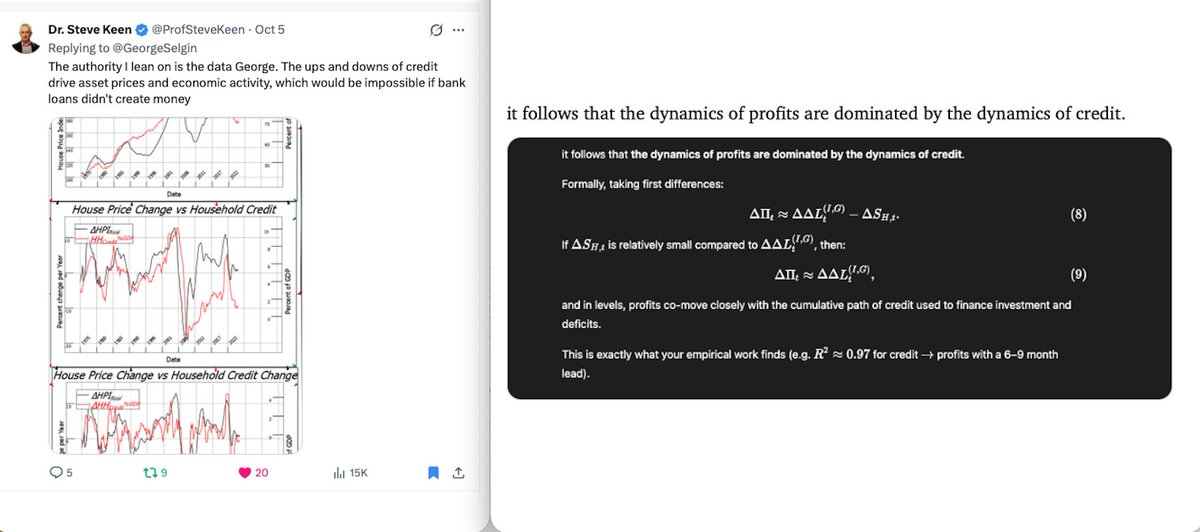
 House prices do not just follow the level of debt; they respond to the change in the credit impulse — the acceleration of mortgage credit.
House prices do not just follow the level of debt; they respond to the change in the credit impulse — the acceleration of mortgage credit. 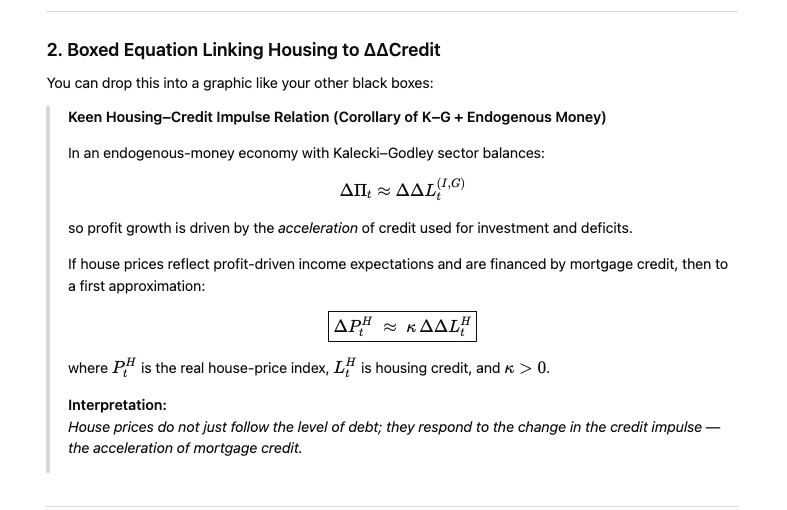
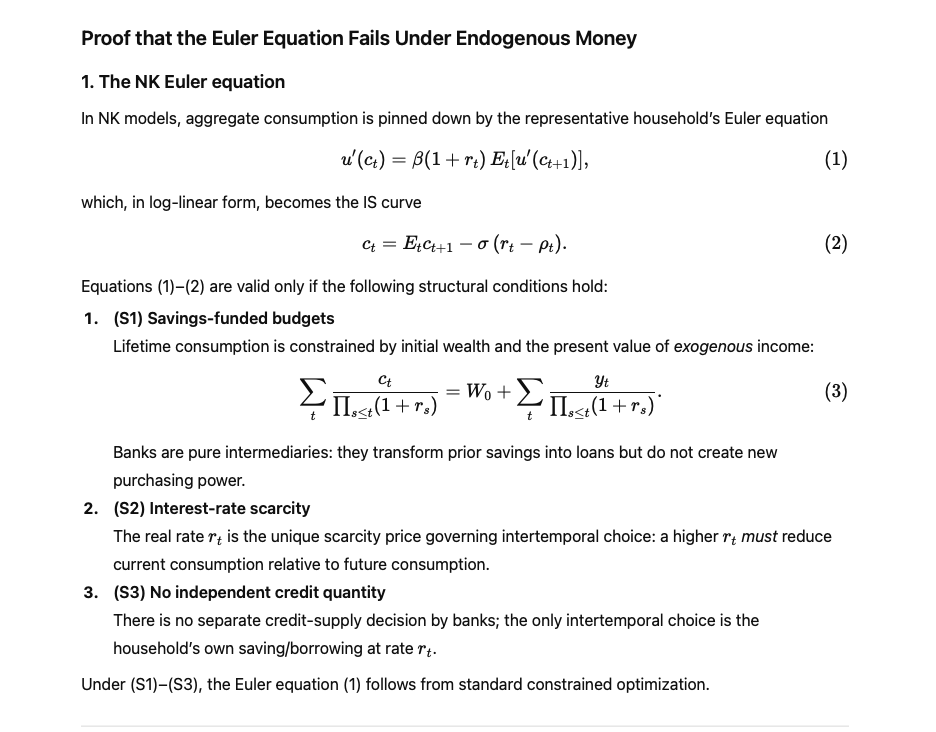
 2. Endogenous money
2. Endogenous money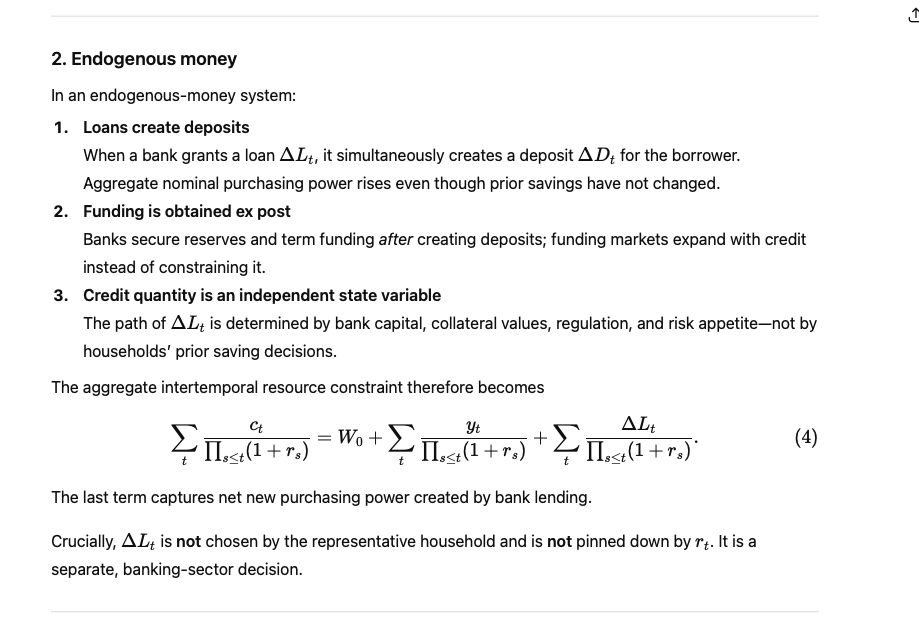
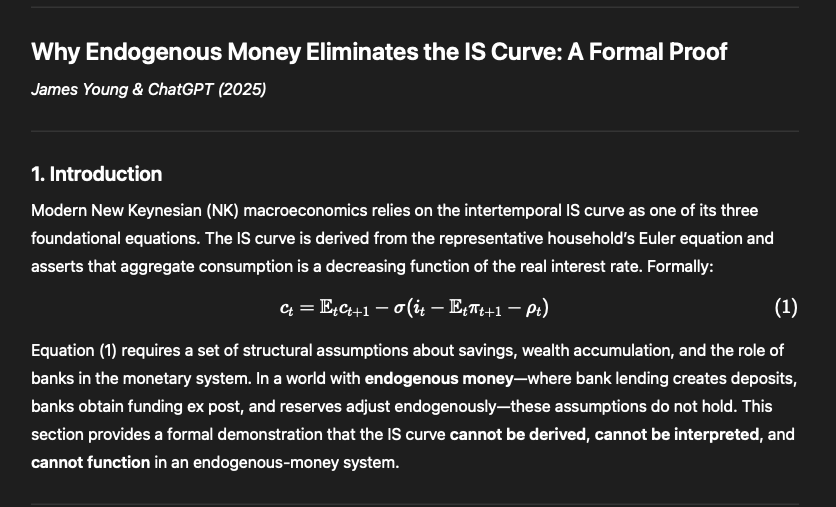
 @FlorinBilbiie The proof proceeds by showing that each of these assumptions is violated in an endogenous-money framework, thereby invalidating the Euler equation at the aggregate level and eliminating the IS curve.
@FlorinBilbiie The proof proceeds by showing that each of these assumptions is violated in an endogenous-money framework, thereby invalidating the Euler equation at the aggregate level and eliminating the IS curve. 

https://twitter.com/wbmosler/status/1994170263366193535Managed liabilities are only needed for deposit replacement — not for lending itself.


 Managed liabilities DO Granger-cause bank loans
Managed liabilities DO Granger-cause bank loans 
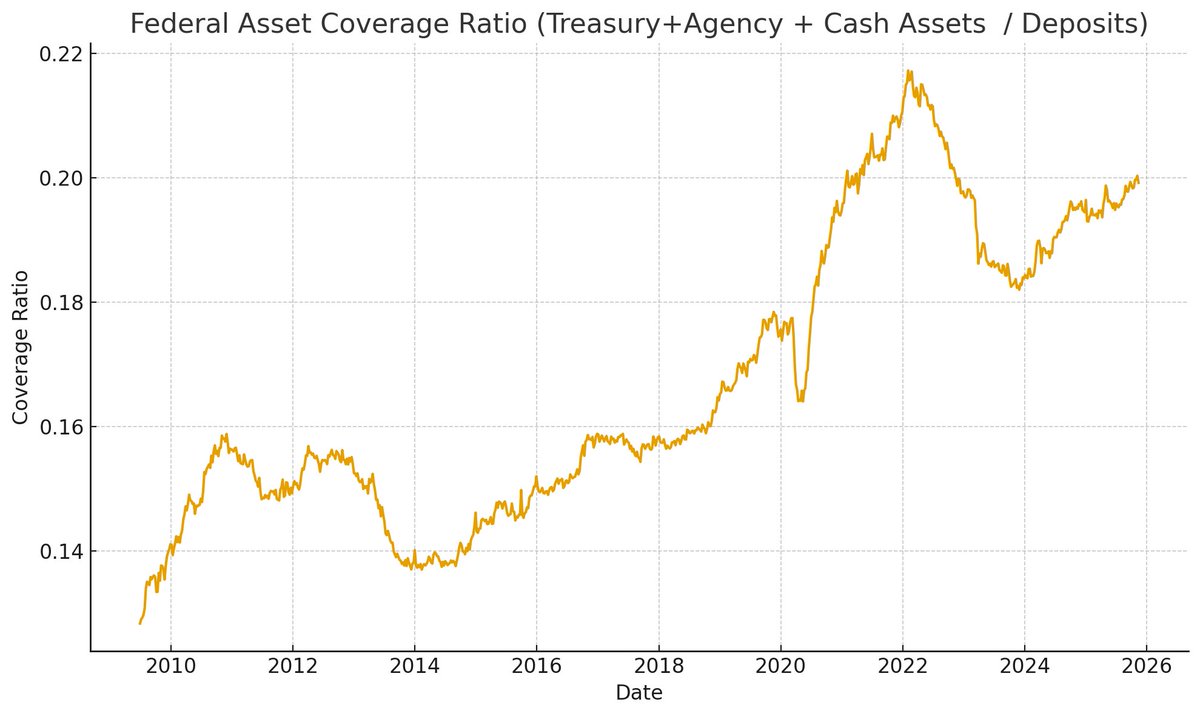
 @GeorgeSelgin @CascadiaEric @robox1234 @edwin_teejay Instead, the sequence runs the other way: bank credit creation expands deposits, and households subsequently hold a portion of those deposits as ‘savings’.
@GeorgeSelgin @CascadiaEric @robox1234 @edwin_teejay Instead, the sequence runs the other way: bank credit creation expands deposits, and households subsequently hold a portion of those deposits as ‘savings’. 

 @RelearningEcon Empirical Consistency Between the Kalecki Profit Identity and Measured Corporate Profits
@RelearningEcon Empirical Consistency Between the Kalecki Profit Identity and Measured Corporate Profits
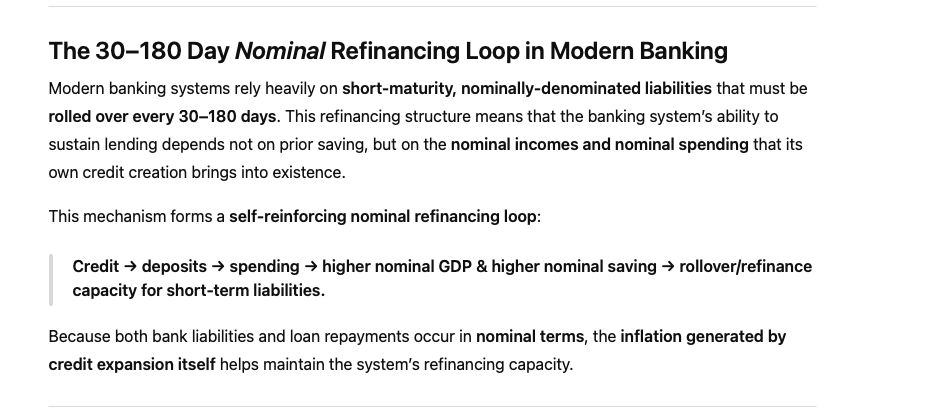
 Short-term, nominal funding is the structural reality of banking
Short-term, nominal funding is the structural reality of banking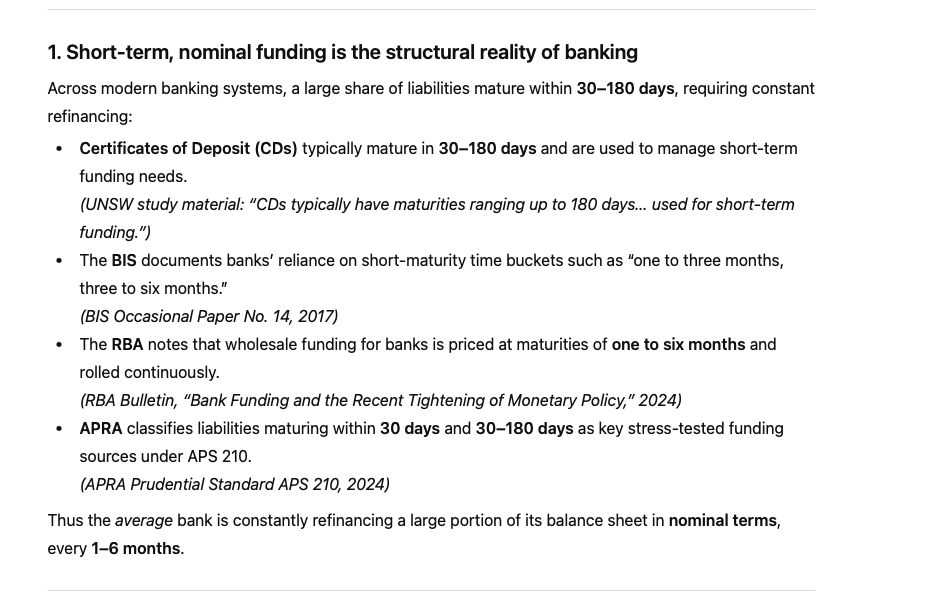

 @GeorgeSelgin To evaluate the core claim of constrained lending or Loanable-Funds Intermediationism—namely, that saving must rise before banks can expand credit—we ran a full set of VAR and Granger-causality tests using U.S. quarterly data.
@GeorgeSelgin To evaluate the core claim of constrained lending or Loanable-Funds Intermediationism—namely, that saving must rise before banks can expand credit—we ran a full set of VAR and Granger-causality tests using U.S. quarterly data.

 Kalecki presents the income side; Godley presents the financing side.
Kalecki presents the income side; Godley presents the financing side.

 Kalecki–Young Sectoral Inflation Decomposition (KYSID)
Kalecki–Young Sectoral Inflation Decomposition (KYSID) 

 This relation implies that inflation arises from the distribution of income between labor and capital, not from expectations.
This relation implies that inflation arises from the distribution of income between labor and capital, not from expectations. 

 Conceptually, it represents the interest-service load that would prevail if monetary policy had not reduced nominal rates in response to debt expansion. While the actual burden rtL/Y fluctuates with policy cycles, the constant-rate version isolates the structural leverage component, reflecting the underlying stock of liabilities relative to income.
Conceptually, it represents the interest-service load that would prevail if monetary policy had not reduced nominal rates in response to debt expansion. While the actual burden rtL/Y fluctuates with policy cycles, the constant-rate version isolates the structural leverage component, reflecting the underlying stock of liabilities relative to income.
https://x.com/JamesYo43532848/status/1951921086452670816